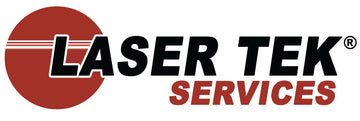Are you familiar with resin identification codes? These are recycling codes imprinted as triangle of arrows on plastic container products. Recycling codes are item identifiers that will help classify the composition of a product. It comprises 7 types of plastics with numbers representing the universal recycling symbols. But what do these recycling symbols mean?
Recycling Codes and their Meanings
Type 1 Polyethylene Terephthalate a.k.a. PET, PETE
What do recycling symbols mean? Polyethylene Terephthalate is a component of polyester group, a thermoplastic polymer resin used in synthetic fibers. The polymer is essential for making beverage, food and other liquid containers. These types of plastics have cheaper materials and easy to reuse.
Recycle. Reuse. Reduce! You can never do wrong with a regular dose of cool recycling ideas for all that junk.
PET and PETE are used in: Beverage bottles (water, soda, beer)
- Food and non-food containers (peanut butter, salad dressings, condiments, antiseptics)
- Polyester fibers
- This can be recycled into: Food and beverage containers
- Carpet wools and tote bags
- Furniture and tools for cladding
Type 2 High Density Polyethylene a.k.a. (HDPE)
What do recycling symbols mean? High Density Polyethylene is a polyethylene thermoplastic polymer made from fuel and frequently used by manufacturers engaged in the production of juice extracts, laundry and dairy products. High Density Polyethylene is often seen in thick and cloudy containers. In line with its high-density properties, product contents such as milk and syrups are unlikely to leak in this type of plastic. These types of polymers are easy to recycle as well.
HDPE is used in:
- Drinking containers (juice and milk)
- Food containers (butter and yogurt tubs, cereal box liners)
- Chemical containers (motor oil)
- Laundry and toiletries (detergent and bleach, shampoo, household cleaning products)
- Plastic bags and garbage cans
- Pipes and lumbers
This can be recycled into: Tables and chairs
- Writing instruments
- Recycling containers, pails and bins
- Flower pots, sheets and films
Type 3 — Vinyl or Polyvinyl Chloride a.k.a. (PVC)
What do recycling symbols mean? Polyvinyl Chloride is one widely used polymers, following polyethylene and polypropylene. PVCs are highly used in a broad selection of merchandise such as construction tools, toys, food wraps, bottles, clothing, and insulators. Nevertheless, these are barely accepted by recyclers due to the many arguments on health complications causing cancers and birth defects.
PVC is used in:
- Packaging sheets such as aluminum foil
- Medical tubing and equipment
- Detergent and shampoo bottles
- Windows, plumbing pipes, flooring and carpet backing
- Electrical wires and cables
- Bags, toys and T-shirts
This can be recycled into: New packaging items, flaps, film and sheets
- Floor tiles, mats, trays, hose
- Electrical and construction tools (cables, wires, gutters, pipes, speed bumps)
Type 4 — Low Density Polyethylene (LDPE)
What do recycling symbols mean? Low-density polyethylene is an important plastic grade of polyethylene. It is a thermoplastic derived from the monomer ethylene. This recycling code is supposed to indicate a higher level of dependability than other symbols due to low-density properties. It is produced in translucent or opaque wrappings, although fairly breakable with good resistance to strong concentrates despite its toughness and flexibility. This is the reason why recyclers are beginning to take them for recycling.
LDPE is used in:
- Soap dispenser and squeezable wash bottles
- Bags (shopping, dry cleaning, tote)
- Clothing apparels and plastic tubing
- Food wraps (aluminum foil, frozen foods, bread)
- Rugs, furniture and laboratory equipment
This can be recycled into: Tools for cladding, floor tiles
- Garbage and compost cans
- Shipping envelopes
- Landscape timber and lumber
Type 5 — Polypropylene a.k.a. (PP)
What do recycling symbols mean? Polypropylene is also a thermoplastic polymer produced out of the monomer propylene. It is a hard plastic resistant to several solvents, bases and acids. Most of these have the same configuration as HDPE and LDPE.
PP is used in: Bottles (food, medicine, straws, yogurt, syrups)
- Automotive parts, interiors, speakers, bumpers and industrial fibers
- Dishware, laboratory equipment and packaging sheets
- This can be recycled into: Brushes and brooms
- Ice scrapers, bins and trays
- Battery cases, signal lights and bicycle racks
Type 6 — Polystyrene a.k.a. (PS)
What does recycling symbol mean? Polystyrene is a synthetic aromatic polymer made from the monomer styrene, a liquid petrochemical. This can be rigid or foamed, which is useful to make Styrofoam. It is usually hard, brittle and clear but can be pigmented with dyes. Some recyclers discourage these plastics to be recycled due to its toxic chemicals produced.
PS is used in: Disposable cups, plates, utensils
- Bottles and containers (food, medicine)
- Meat trays and wrap sheets
- CD and DVD covers
- This can be recycled into: Foam packaging (utensils, food, plate, cups, egg crates)
- Toys, cassettes, and pots
- Insulators, vents, switchboards, and plate frames
Type 7 Others a.k.a. (O)
Reuse empty toner cartridges and save as much as 80% on printing costs. Visit http://www.lasertekservices.com and shop for the toner refill kit compatible with your cartridge.
What does recycling symbol mean? Others are mixed plastics that do not belong to other codes mentioned above. This includes Bisphenol-A (BPA) which is found in polycarbonate (PC); acrylic plastics/polyacrylonitrile (PAN), styrene acrylonitrile (SAN), polyamide (PA), and bioplastics. These are very dangerous substances that damage hormones causing birth defects and spontaneous abortions.
O is used in:
- iPod packing, computer cases, and bullet-proof products
- Dark glasses
- Water gallon bottles
These can be recycled into: Customized products and lumbers.





